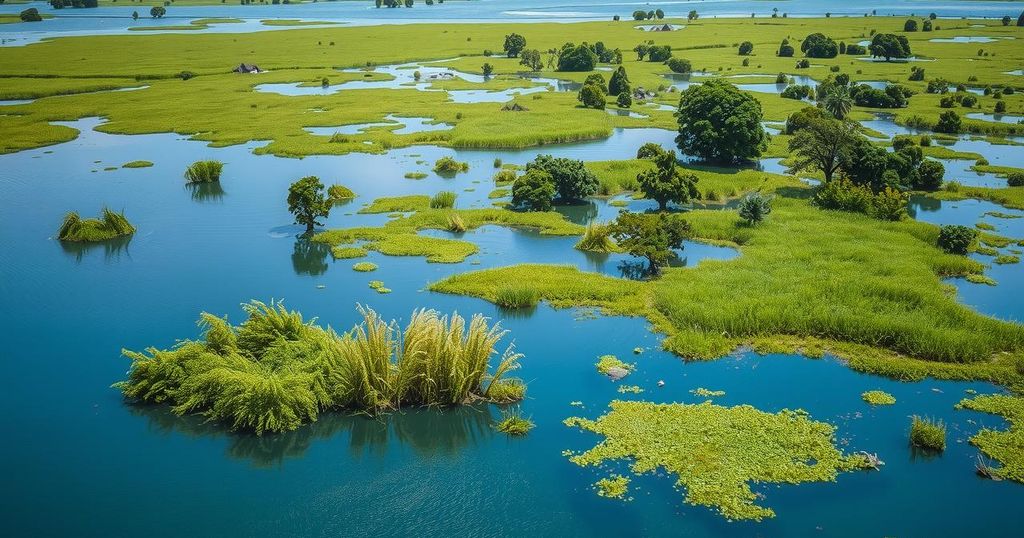Severe Flooding in Botswana: An Overview of the Ongoing Crisis
Severe flash flooding hit Botswana from February 19 to 21, 2025, causing significant disruptions, evacuations, and damages across several districts. Over 2,300 people were evacuated, with ongoing recovery efforts still impacting communities as schools remained closed. The situation was worsened by projected rainfall, prompting calls for assistance from the Botswana Red Cross Society.
From February 19 to 21, 2025, Botswana experienced severe flash flooding as a result of heavy rainfall affecting multiple districts. Significant amounts of rainfall peaked at 235mm in Kokotsha and 160mm in Mogoditshane, with over 50mm recorded for more than 24 hours. This extreme weather led to flooded homes, submerged roads, contaminated water sources, and disrupted transportation systems across Boteti, Gaborone, Ghanzi, South-East, Kweneng, Kgalagadi, Mogoditshane, and Kgatleng districts.
An assessment by local authorities conducted between February 21 and 24, 2025, revealed considerable disruptions to daily life. Vulnerable populations, including children, pregnant women, and the elderly, faced significant challenges, particularly those residing in low-lying areas. Schools in numerous districts temporarily closed from February 20 to 24; however, the situation was particularly dire in Kgatleng District, where schools remained closed longer due to flooding.
The floods caused extensive damage to homes, personal belongings, and food supplies, necessitating the evacuation of 2,318 individuals, while thousands more were displaced by February 26, 2025. As of March 2, 2025, 402 people remained in evacuation centers due to ongoing recovery efforts, with several major roads still closed, hindering access to affected areas.
The Botswana Government had issued a warning on February 19, forecasting persistent above-average rainfall, which was exacerbated by La Niña effects and regional weather patterns. The Government called upon the Botswana Red Cross Society (BRCS) for assistance, highlighting the diminished capacity to respond to disasters due to previous storms and floods in late 2024. A national disaster taskforce has since been established, with the BRCS playing a crucial role in supporting the affected communities. Through the DREF allocation, the National Society aims to assist 9,000 individuals across Ghanzi, Kgatleng, Tlokweng, and Gaborone.
The flooding in Botswana serves as a reminder of the vulnerabilities faced by communities during extreme weather events exacerbated by climate change. With extensive damage reported and thousands displaced, the collaborative efforts between the Government and BRCS are vital in providing necessary support and relief to those affected. It is essential to enhance responsiveness to such frequent disasters to mitigate future impacts on vulnerable populations.
Original Source: reliefweb.int




Post Comment